London is full of hidden places. Whether through planning or accident, there are wonderful sites untouched by urban sprawl. The Honorary Artillery Company (HAC) grounds nestled between Bunhill Row and the City Road, is one of them. Although now a charity, the former regiment has occupied the Artillery Garden since 1641, and Armoury House, its Headquarters and Mess, from its construction in 1734. Normally off limits to the every day suited and booted City denizens, the HAC as it is known locally, opens its gates annually to host one of London’s premier concours competitions.
Started in 2017 and dubbed “An Automotive Garden Party at the Heart of the City”, the London Concours at the HAC is a wonderful occasion for the locals to leave their glass towers and saunter around the secluded grass lawn viewing cars that they either aspire to own, or do own, during an extended “lunch hour”. A Veuve Clicquot tent was on hand to help revive the weary after perambulating around such exquisite cars in the dazzling London sunshine.
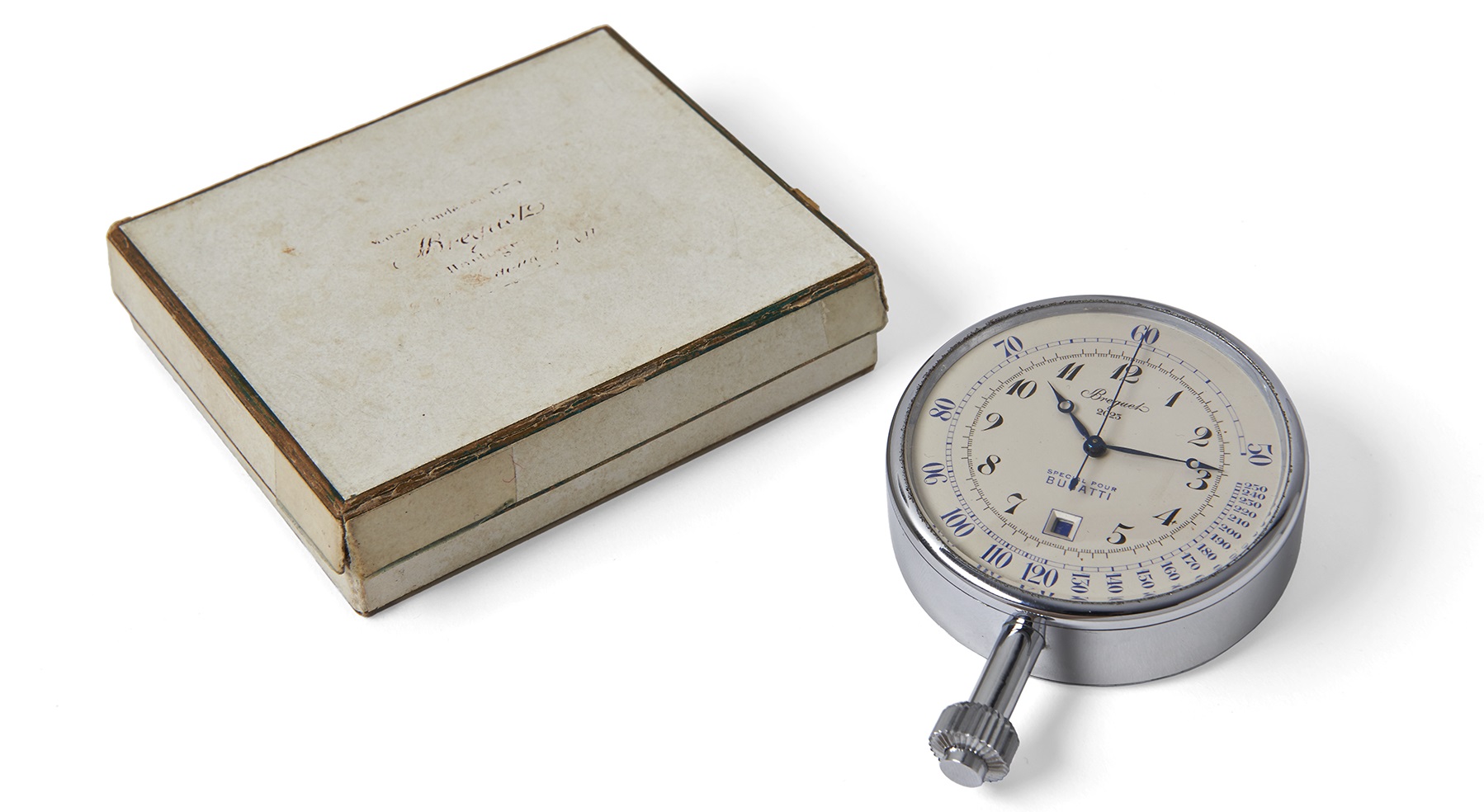
Breguet clock No. 2023 created for Bugatti in 1932.© Museum Breguet.
Montres Breguet were back this year as the main sponsor. Their history with the automobile could be found in and around their stand. The brand’s first foray into car clocks was for the Bugatti Royale, the pinnacle of luxury at the time. However, their release at the start of the Great Depression could have been better timed. In the end, only six were ordered out of the 25 planned. Ettore Bugatti bought a series of nine watches, made in 1932, and intended them to be placed at the centre of the steering wheel. Breguet clock No.2023 is a chronograph with a tachymeter scale on the dial, bearing the words “Spécial pour Bugatti”, and housed in a chrome-plated case.
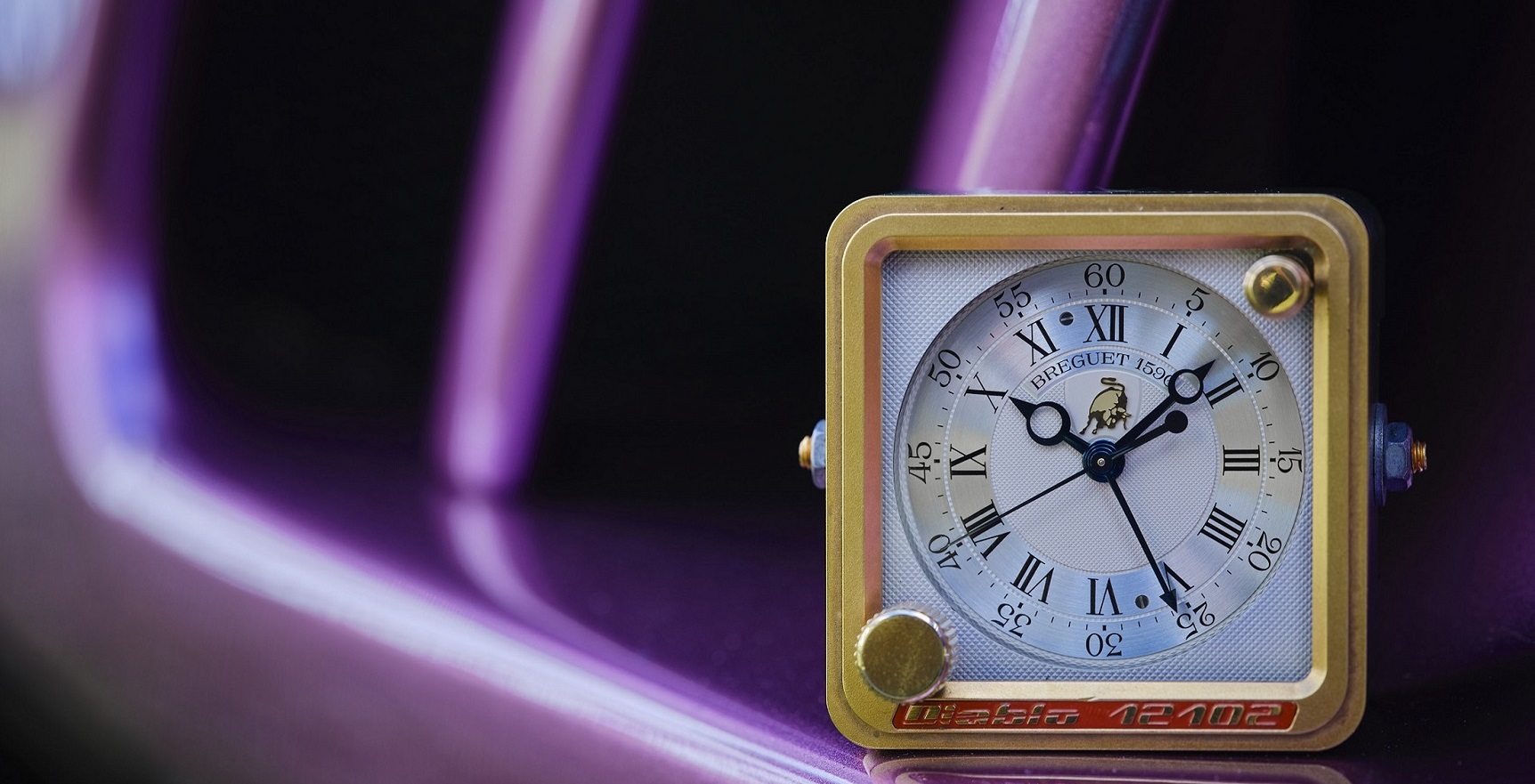
Breguet dashboard clock commissioned by Lamborghini in the early 1990s for their then new Diablo.© Ben Broomfield Photography.
In a similar vein in the early 1990s, Breguet was commissioned by Lamborghini to create a dashboard clock for their new Diablo model. The chronograph clock was an optional extra and featured a stainless-steel case with gilded green lacquer, a silvered dial with black Roman numerals, Breguet blue steel hands and the Lamborghini logo. Only around 60 were thought to have been made. Both car and clock were on display with the combination being sufficiently rare to be a worthy Concours entrant.
As a showcase, the London Concours has become significant to the brand. Enthusiasts and collectors in the mechanical arena of cars are often inclined to that one of watches and Breguet’s legacy in horology is second to none. The event is sufficiently important for Lionel A. Marca, their CEO, to attend and choose the occasion to launch a new reference: the stunning Breguet Tradition ref. 7047 Tourbillon Waltz, an open worked watch displaying a complex movement, with a tourbillon escapement and a chain fusée drive train.
The new Breguet Tradition ref. 7047 Tourbillon Waltz, on the wrist of CEO Lionel A. Marca.
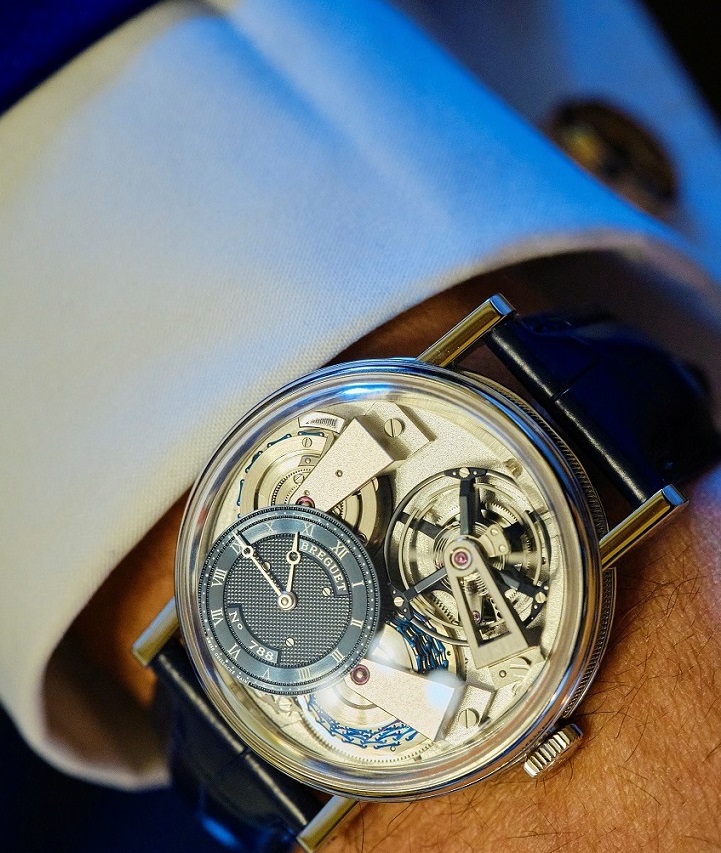
The annual automobile extravaganza in the City brings around 80 of the world’s most precious and prestigious cars to the Artillery Garden. This year there were eight classes that illustrated the history and international breadth of the automobile. Classes as diverse as “Fins and Chrome” and “Japanese Jewels”, along with “Great British History” and “The Italian Spiders” produced some impressive cars in varying degrees of originality and condition.
Fins and Chrome class: detail of the chromed fin and tail light of the Cadillac Eldorado.
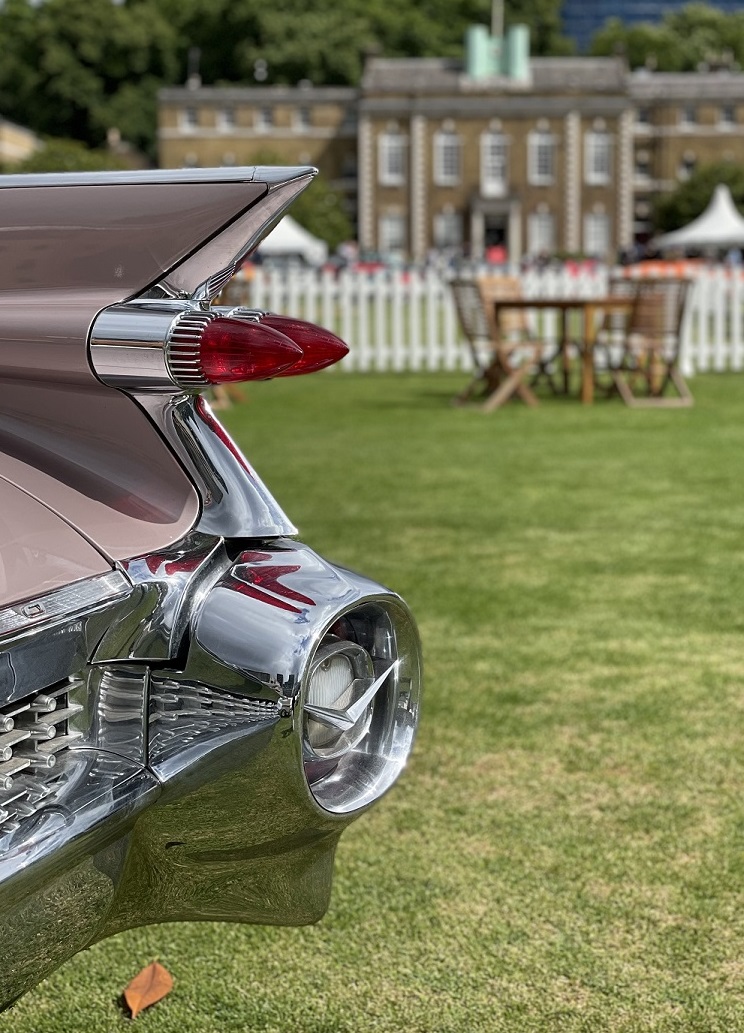
Anything from a 1959 Cadillac Eldorado Biarritz Convertible with its iconic fins and taillights – I do wonder how the car manoeuvred through the local London streets – to the 1962 Ferrari 250 GT California SWB with its refined lines and minimalist form. Both cars made around the same time, with the same idea of driving in sunny climes, but with a completely different approach and form. Interesting to see the US manufacturer pick a name after a European place and vice versa. Exotic names for cars at the time were, I suppose, synonymous with somewhere foreign. The Ferrari 250 California won both The Italian Spiders class and the Chairman’s Award, the latter being based on which car he would most like to drive home himself. Admittedly, I would too.
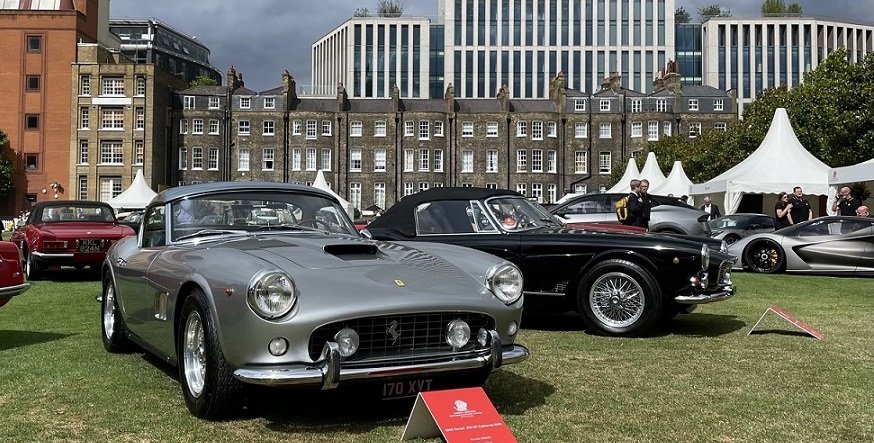
Ferrari 250GT California SWB, winner of the Italian Spiders class and the Chairman’s Award.
In a similar vein, a 1931 Bentley “Blower” was displayed just feet away from a 2021 Ford GT40 Carbon. Both essentially designed and made to race the 24 Hour at Le Mans, they represent the zenith of technological achievement for the petrol-powered automobile of their age. The high-end modern day exotic cars, of which the Ford GT40 Carbon was one, were found in “The Pursuit of Speed” class which was also sponsored by Breguet. Everything from the star Ferraris, F40, F50 and an Enzo – all parked next to each other – to a now classic 1990 Lamborghini Countach and a 1992 Jaguar XJ220.
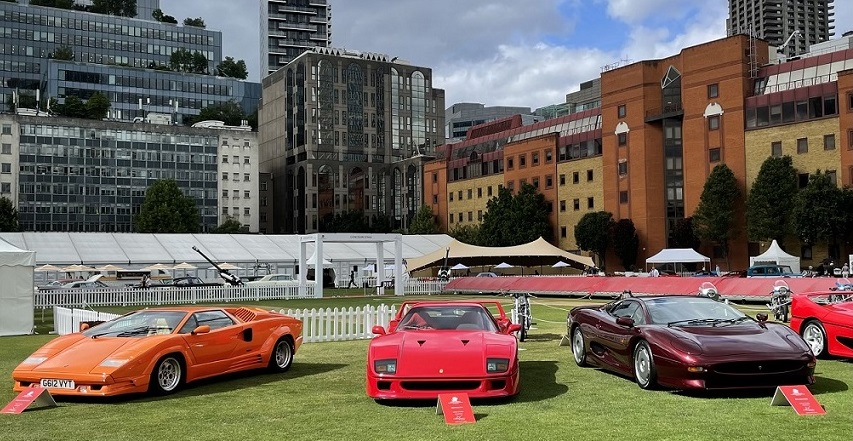
Pursuit of Speed class, sponsored by Breguet.
Current manufacturers were also in attendance, with Alpine and Lotus being the main participants. Lotus displayed their new Eletre, their made in China all-electric SUV released in March this year. The performance metrics are a lesson in why electric cars are becoming popular. With a range of 370 miles, a top speed of 160 mph, and an eye watering acceleration of 0-60 in 2.9 seconds, the Eletra has the sport credentials of the brand and the terrain ability and room expected in a SUV.
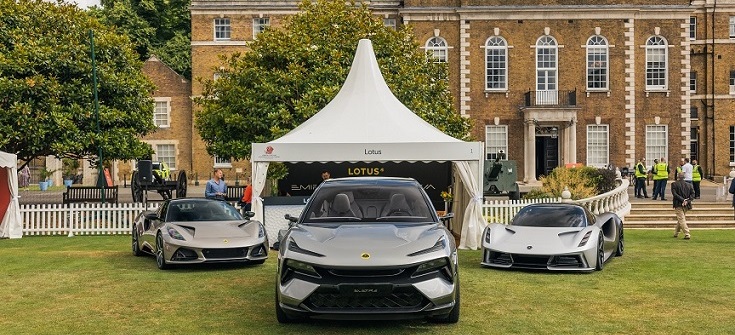
Lotus brought their three current models: Eletre (middle), Emira and Evija. © Charlie B Photography
Specialist manufacturers were present in the form of Bizzarrini, with their stunning red 5300 GT Revival Corsa 24/65, a traditionally made car in all senses of the word. Based on the 1965 Le Mans model of the same name, it is designed to meet FIA specifications and be competitive for historic racing. Only 24 units will be made. At the other end of the spectrum, RBW Electric Classic Cars presented their MGB Roadster with an electric power unit. From the same people who manufacture the Jaguar EV-Type, the MGB Roadster is a more affordable restored British classic sports car with an environmentally friendly power unit.
For the Best in Show, and winner in the Japanese Jewels class, the London Concours’ judges picked an extraordinarily original Toyota 2000GT. It was one of the 1960s most memorable GT cars, the open top version making an appearance in James Bond You Only Live Twice, that produced a number of firsts for the Japanese car industry. Just 351 were built in total. This example had an interesting history, originally sold in Mozambique, after which it went to Portugal in 1976 before appearing on eBay in 2007. It was fully restored in 2012.
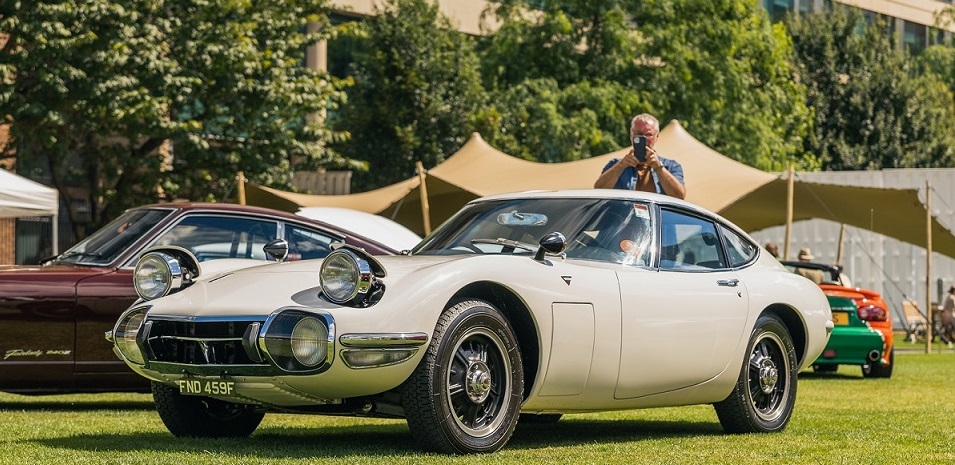
The winner of Best in Show and of the Japanese Jewels class: a Toyota 2000GT. © Charlie B Photography.
Judging by the number of people through the gates at the HAC, attendees had no trouble finding the grounds, or extending their lunch hours. The London Concours provides an eagerly anticipated event in the Square Mile, that along with the eclectic set of car classes for entry, and the particular association with the automobile that Breguet has, provides something of a mid-summer festival for the usual office bound gear and petrolhead inclined individuals. I am sure most have already marked their calendars for the event next year.
Words: Dr Andrew Hildreth














Show Comments +